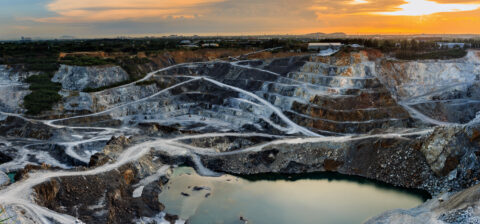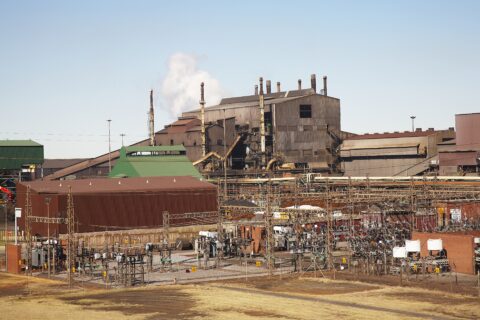SA Mining
Metals Outlook For 2022
Benedikt Sobotka – CEO of Eurasian Resources Group: Metal
Copper, iron ore and natural gas prices hit all-time highs; the price of aluminium surged to a 13-year high, gaining over 40% year on year; and the price of cobalt more than doubled, reaching its highest level since 2018.
The main driving forces for these markets have been supply chain disruptions, production restrictions in China, the energy crisis, a stimulus-led consumption boom in the United States (US) and depleted inventories.
Going forward, the outlook for the sector remains constructive, with most base metals still trading above historical levels, albeit lower on average compared to 2021. The fading pandemic and the tightening US monetary policy both still have the potential to deliver economic setbacks. But persistent supply chain challenges, a changing inflation landscape and the energy transition should, overall, create a bullish environment for industrial commodities.
Even more encouraging are early signs of policy easing in China, which should filter through to the real economy by mid-2022.
Aluminium: solid gains still expected
We believe that aluminium has strong potential to outperform other London Metal Exchange base metals in 2022, having again breached the important milestone of $3 000/tonne at the start of this year. The market will remain in a sizeable deficit for the second consecutive year, with visible inventories at the lowest level since the global financial crisis.
China’s aluminium supply growth will be constrained by the country’s strict energy consumption controls and a slow ramp-up of idled smelting capacity. Moreover, the world’s accelerated decarbonisation efforts and soaring energy prices limit capacity additions outside China.
At the same time, aluminium demand is supported by China’s infrastructure investments, while the focus on renewables, rising electric vehicle (EV) production and recyclable aluminium packaging should ensure aluminium demand growth is exceeding supply growth globally. As a result, we could see the highest aluminium prices in over 30 years.
The stage is set for cobalt to climb to new heights
Cobalt’s 119% price surge through the course of 2021 emanates a very loud and clear message: the market is severely short of the blue metal. Moving into 2022, there are no discernible signs of any fundamental easing, with prices remaining on an upward trajectory as consumers scurry to secure sparsely available spot units – a situation that will undoubtedly persist throughout 2022 and beyond.
While it seems obvious to us today that much of the tightness is underscored by stellar demand growth from the EV segment, just a year ago most of us would have sniggered with disbelief at the prospect of EV sales more than doubling in 2021. Yet it is now a reality, and the pace of EV adoption shows few signs of losing momentum, being supported by the global transition to a greener future.
We firmly believe that future EV sales will continue to exceed analysts’ expectations, driven by governments’ ambitious adoption goals and manufacturers’ aggressive sales targets.
Based on these announcements alone, we believe that EV sales’ market penetration should exceed 50% by 2030, which is in stark contrast to most analysts’ currently conservative forecasts of around 30%. Perhaps an even more powerful force for change will be consumers’ booming receptiveness to EVs, incentivised by their performance benefits, lower running costs, improving range, strong environmental credentials, and – perhaps most importantly – falling prices relative to their petrol and diesel counterparts.
Yet the cobalt market will not rely solely on the EV sector for strong demand growth in 2022 and beyond. The use of cobalt-bearing lithium-ion batteries is burgeoning across a spectrum of end-use sectors, from mobile electronics to e-mobility and battery energy storage systems.
Even demand from traditional cobalt metal end-use sectors, which account for around a quarter of overall consumption, looks set to undergo a boom this year, spurred by the recovery of the aerospace sector. The International Air Transport Association forecasts that global air travel demand will grow by 52.5% year on year in 2022, while industry heavyweights Boeing and Airbus have announced ambitious production targets for this year.
Meanwhile cobalt supply is increasingly unable to keep pace with demand. The underlying reason behind this is straightforward: as gigafactories pop up at record speeds (BMI predicts that global battery production capacity will quadruple between 2020 and 2025), developing industrial-scale mines still takes 10 to 15 years on average.
Importantly, downside risks surround the timely commissioning and ramping up of many existing projects, in view of global shortages of mining equipment and the adoption of the historically troublesome high-pressure acid leach technology at numerous mine projects in Indonesia.
Furthermore, the responsiveness of artisanal cobalt supply to elevated prices has been reduced by consumers’ growing scrutiny of the cobalt supply chain, facilitated by new tracing solutions. These include the Battery Passport and REiSource, and the Democratic Republic of the Congo government’s efforts to introduce stronger controls to the sector.
Finally, the movement and availability of cobalt raw materials continue to experience logistical disruptions, which are likely to persist throughout the year.







 Sign-up and receive the Business Media MAGS newsletter OR SA Mining newsletter straight to your inbox.
Sign-up and receive the Business Media MAGS newsletter OR SA Mining newsletter straight to your inbox.